The Corsair Strafe RGB Mechanical Keyboard Review with MX Silent (Red) Switches
by E. Fylladitakis on March 15, 2016 10:00 AM EST- Posted in
- Keyboard
- Corsair
- Cherry MX
- Mechanical Keyboards
The Corsair Strafe RGB Mechanical Keyboard
Externally, the Strafe RGB is a rather simple keyboard, sporting a plastic body and a modern design, based on simple geometric shapes and curves. The plastics are of very good quality, feel great and are very firm. Although it is very similar to the vanilla Strafe version, there are distinctive differences between the two models. Visually, the most obvious difference is that the red metallic support plate is now white, in order to not distort the lighting color. Corsair also moved the company name to the right side of the keyboard and added wrist rest support. The company's "sails" logo remains at the top left side of the keyboard, now illuminated.
The Strafe RGB is a standard full-size keyboard, with the only two extra keys being the square keys at the top right side of the keyboard. By default, one of the square keys controls the intensity of the lighting, while the second locks the Windows keys so they are not accidentally pressed during gaming (which minimises the game and may cause a bit of rage). Media functions for volume and track controls have been inserted as secondary commands in the F5-F12 keys, and are accessible by holding down the FN key. There are no dedicated media keys or the much-loved metallic volume control wheel that is found on their higher tier keyboards. Since the Strafe RGB is fully programmable, it is highly likely that one of the two extra keys can become a volume mute key, or both are going to become volume control keys.
The stock keycaps of the Strafe RGB are standard cylindrical black keycaps with enlarged characters, with the exception of the Space Bar key. The Space Bar key is textured and it feels great while typing. The surface of the Space Bar should also decay less easily now, as Space Bar keys with their right side heavily worn out by aggressive thumbs are a common phenomenon. For gamers, Corsair supplies two sets of contoured and textured keycaps. The WASD keycap set is meant for FPS gamers, while the QWERDF set is meant for MOBA gamers. If someone likes to change the stock key settings from, for example, WASD to ESDF like some FPS gamers do, the only solution would be to use the contoured keycaps in the place of the ESDF keys, ignoring the wrong characters.
Beneath the keycaps, we find Cherry's new MX Silent switches. These are practically Cherry MX Red switches, modified to minimize the noise generated via keystrokes. In order to achieve that, Cherry is using a glass-fibre reinforced base that dampens sound when the keys bottom down, as well as mechanical tappets that reduce the noise when the key resets after the finger has been removed. The new additions shorten the travel distance a little, from 4 mm to 3.7 mm, but the actuation force remains the same (45 cN for the MX Red variants), so they should not feel any different to someone accustomed to the normal MX Red switch.
The backlighting is performed using RGB LEDs that project the light upwards to the keycap characters, and also surround the keycap by diffusing through the clear body of the switch. The lighting effect is good and evenly distributed, with the exception of the bottom row that is significantly dimmer towards its bottom. Furthermore, only the main character of the keycaps is being clearly illuminated, as the light of the LED reaching the secondary character is being blocked by the key's axis.
LED lighting strips have been installed on both sides of the keyboard in the gap between the glossy white top and side covers. The lighting strips are not RGB, only white, and can be only turned on or off via the software. The same goes for the company logo at the top left corner of the keyboard.
The Strafe RGB actually features one thing that none of the top tier RGB Corsair keyboards has - a USB port. The pass-through USB port is found at the rear of the keyboard, near the thick cable. It is worth noting that there is no polling rate switch on the Strafe RGB like on the K70/K95 variants, and the cable is not braided either - it is a thick black cable with futuristic easy-grip connectors.
Removing the top cover of the keyboard reveals the satin white metallic plate that supports the main PCB and the keys. It is the common steel plate found in most such designs, which is a little heavy but very durable.
The assembly/soldering of the keyboard is textbook, with no flaws to be found on the main PCB itself. There are no excess solder or points to be found anywhere. The power cables of the side LEDs however could have had the connectors soldered onto the main PCB, as those in our sample were particularly easy to come off. Corsair is using an NXP LPC11U37F controller for their Strafe RGB, the same as the one found in the K70 RGB. It is a high performance 50MHz processor with 128 kB on-chip flash memory.


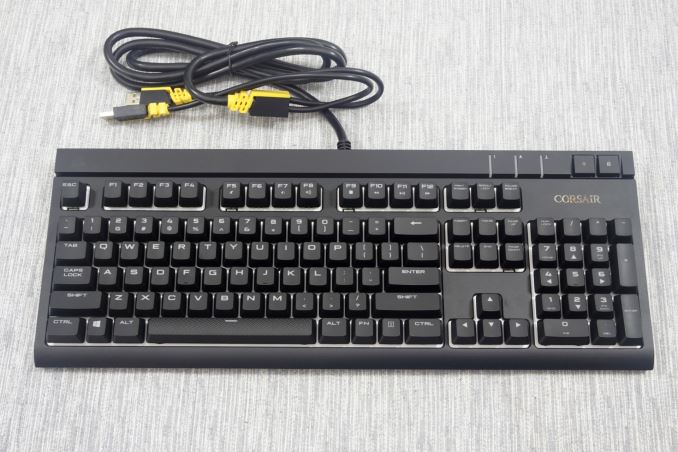
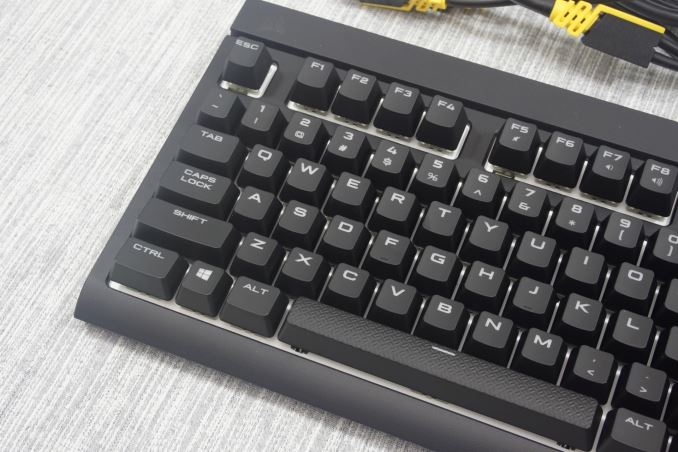
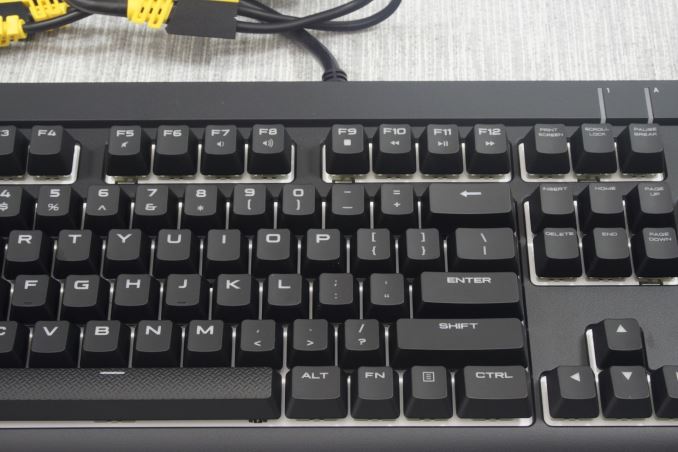
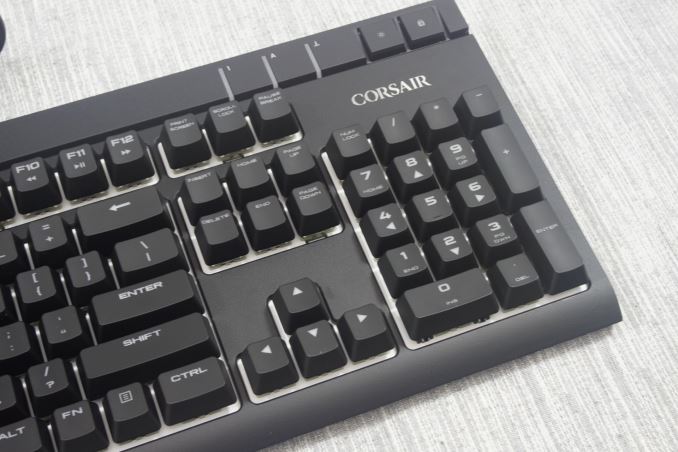
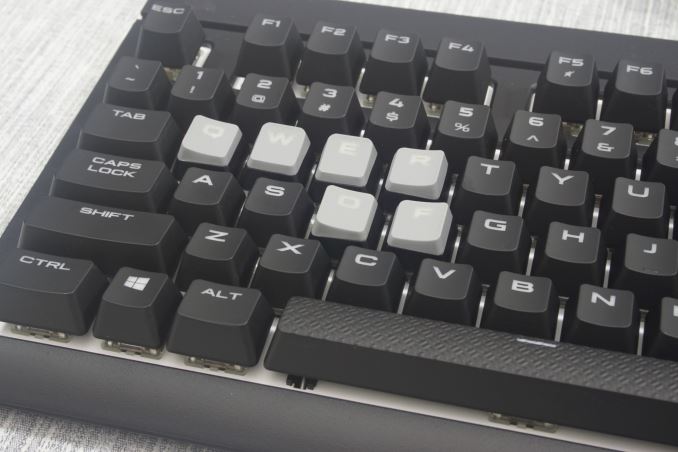
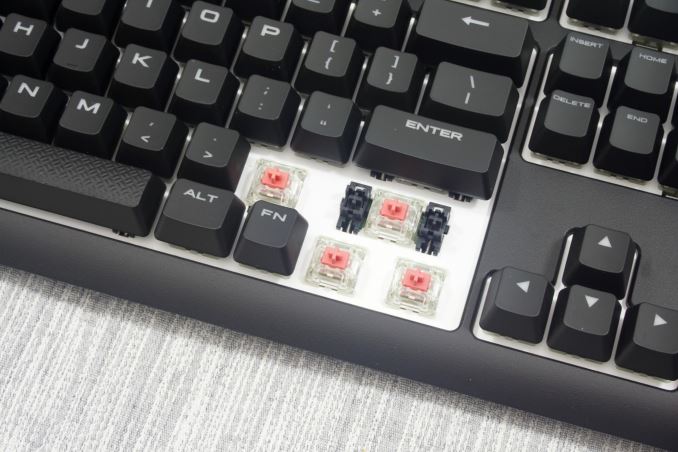


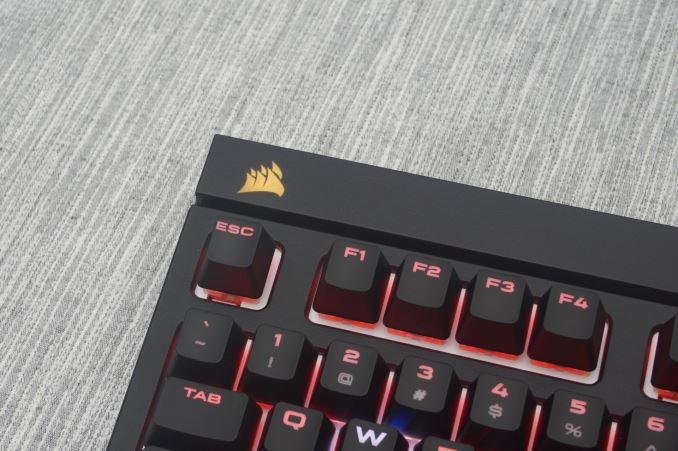
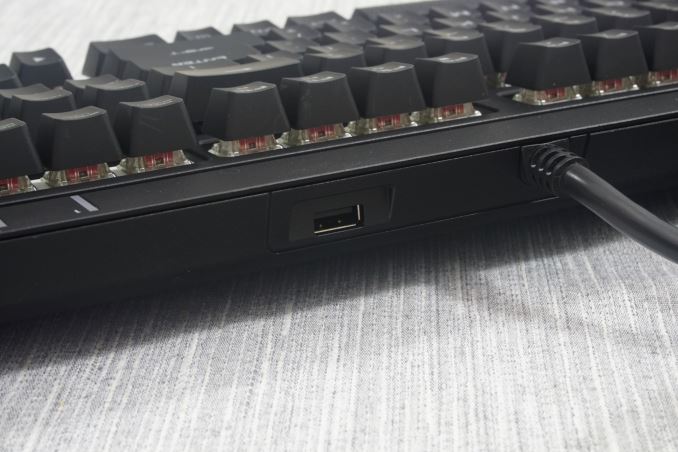

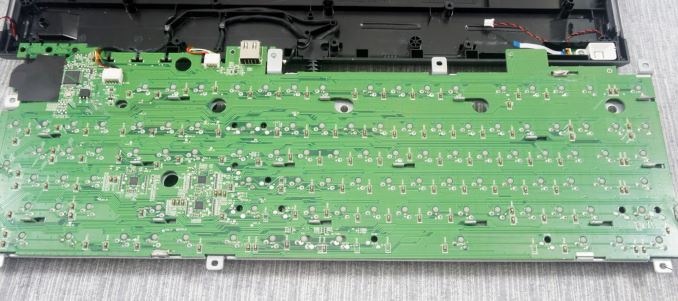
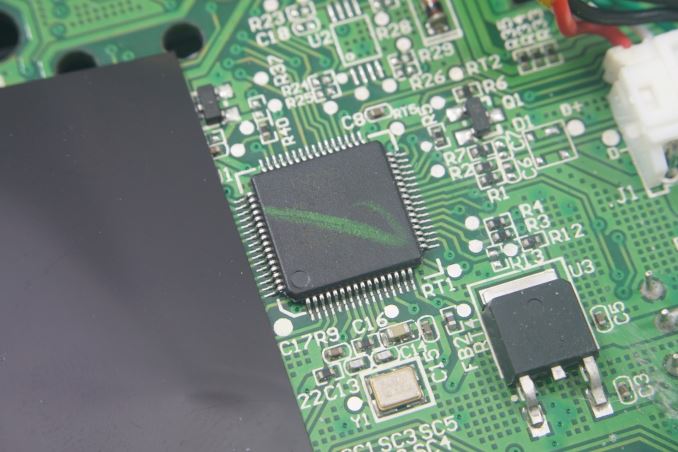








58 Comments
View All Comments
wolfemane - Tuesday, March 15, 2016 - link
I can see that as a nice feature. I really do dislike the tiny return keys. My one dislike of the k800 I use now.MamiyaOtaru - Friday, March 25, 2016 - link
fine except that the backslash key gets displaced somewhere. Typically taking up half of where the backspace key should be. Unacceptable to me, as I am completely used to the full sized backspace key. My favorite old board (pre windows-key days) had backslash between right alt and right command, leaving the double height enter key and full sized backspace and shift keys.bigboxes - Tuesday, March 15, 2016 - link
Don't forget your turbo button.ddriver - Tuesday, March 15, 2016 - link
LOL, it is not THAT old.DanNeely - Tuesday, March 15, 2016 - link
That was on the PC not the keyboard.ddriver - Tuesday, March 15, 2016 - link
There were many keyboards with turbo keys back in the day, there was another line of 3 keys on top of the arrows, under delete end and page down. My keyboard is probably one of the first waves of keyboards who didn't have those and the layout is pretty much identical to keyboards on the market today.bigboxes - Tuesday, March 15, 2016 - link
I know. A joke.kmmatney - Wednesday, March 16, 2016 - link
I threw out my old DIN-connector IBM keyboard 10 years back. Built like a tank, and clicky as heck - I wish I would have kept it...wolfemane - Tuesday, March 15, 2016 - link
I kinda have to agree. I don't get the mechanical keyboard craze. I bought one last year with the silent MX switches. If by silent they meant wake the whole house at night then yeah they were silent. I used it for about 5 months and replaced it with a k800. Using it felt like I was back in junior high playing in the computer lab. Uncomfortable, large, wired, and obnoxiously loud. I failed to see its relevance and noticed no improvement in typing or benefit in gaming. Maybe I just bought the wrong brand of switches. The noise was ultimately the end all of any interest I had for mechanical keyboards.BrokenCrayons - Tuesday, March 15, 2016 - link
Modern mechanical keyboards likely offer a much larger percentage markup than membrane keyboards so manufacturers even landing small sales numbers have a pretty big incentive to develop and market them. The styling is designed to attract people who wish to identify themselves as "gamers" and are willing to spend the money necessary to look the part. It doesn't matter at all if there's no functional difference when the aforementioned person pushes the W key to move their character forward on a $10 keyboard or a $200 keyboard. What matters is that person's belief that it makes a difference worth the cost markup. Like many other products, these high priced keyboards appeal to a part of the buyer's mind that operates without acknowledging logic or reason and they generally WANT the "junior high playing in the computer lab" sensation that you might find absurd.I am amused that they're finally coming around to trying to make these mechanical keyboards as quiet at their discount, mass-produced competitors. It's even more comical that the reduction in typing noise is a highly stressed selling point, but it _is_ a principal of product differentiation that people with marketing degrees enjoy having at their disposal in their adverts. However, I'd be willing to bet that nearly any inexpensive rubber dome keyboard is a lot quieter.